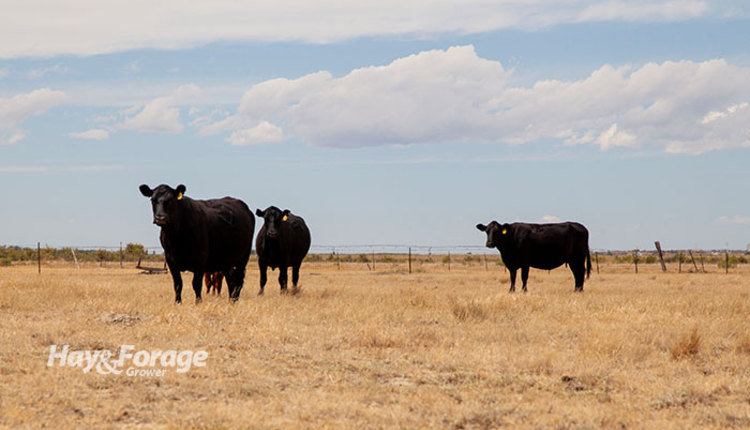
Although it doesn’t necessarily have to rain for one to take a rain check, the figure of speech implies a change of plans. With little sign of rain in the extended forecast in some areas, perhaps taking a drought check is a more fitting phrase for farmers who need to adjust their harvest schedules and grazing practices.
The combination of hot air temperatures and dry weather is especially detrimental to the soil. It creates a heating effect on the surface that can negatively affect plant roots belowground, consequently impairing stand longevity. Raising the cutting height during a hay harvest will leave more residue on the field, which will encourage better ground cover and lower soil temperatures.
Another solution to improve ground cover in a hayfield is grazing livestock instead of making hay. “If a hayfield can be grazed, this would be a suitable time to do so,” say Michelle Sweeten and Kable Thurlow with Michigan State University. The extension educators recommend rotationally grazing livestock to maximize forage utilization while ensuring there is enough residue left to protect the soil.
A greater long-term benefit of this approach is that animals in a growing system reinforce the three-legged stool that supports overall stand health. “The interaction between the livestock, the plants, and the soil biology promotes improved regrowth in the future, assuming we leave enough leaf area,” the extension educators state.
Fence off paddocks in a hayfield and move livestock from one to the next about every three days. Although the length of a grazing period may vary with paddock size and stocking density, moving cattle before they can consume forage regrowth will prevent plant damage from overgrazing.
Other options
Rotational grazing is key to caring for drought-stressed pastures as well. Additionally, reducing the herd size will alleviate some of the grazing pressure from forages. Even with diligent pasture management, though, it might be necessary to buy hay to carry cattle through the winter. The extension educators suggest doing so as soon as possible.
“Buying your winter hay supplies early should be considered to lower your costs,” they assert. “With feed costs generally being the greatest single expenditure for cattle and small ruminant operations, minimizing large expenditure jumps is crucial to the farm’s financial health.”
Other ways to guarantee feed supplies at low costs is to graze cornstalks or plant and harvest a cover crop behind a cash crop. Overall, battling this year’s drought conditions will require a change of plans for some, if not many, farming operations.
“Farmers need to assess their individual situations and come to a decision that makes the most sense for their farm,” the extension specialists conclude. “Successful managers are flexible and adaptable to change.”

